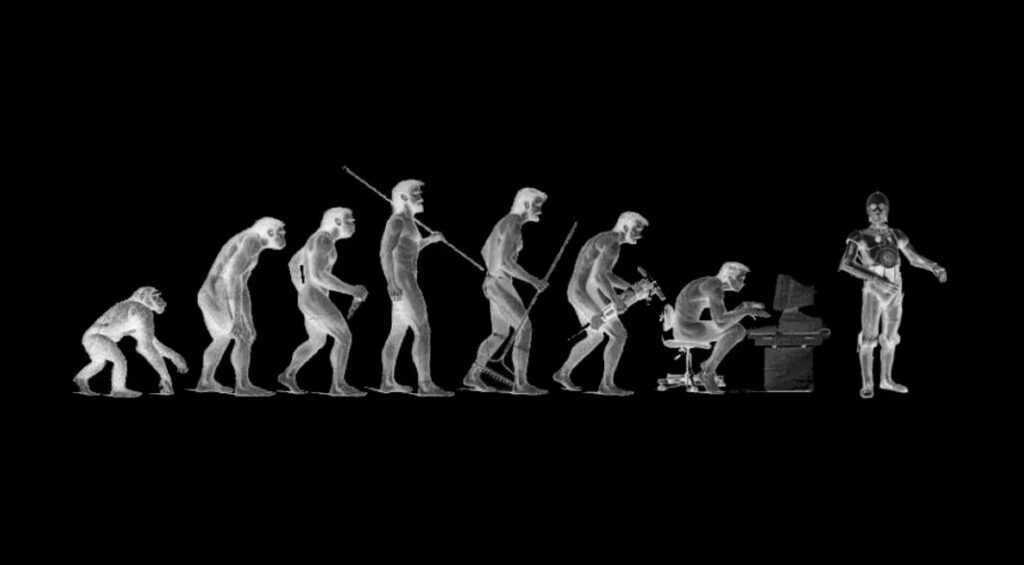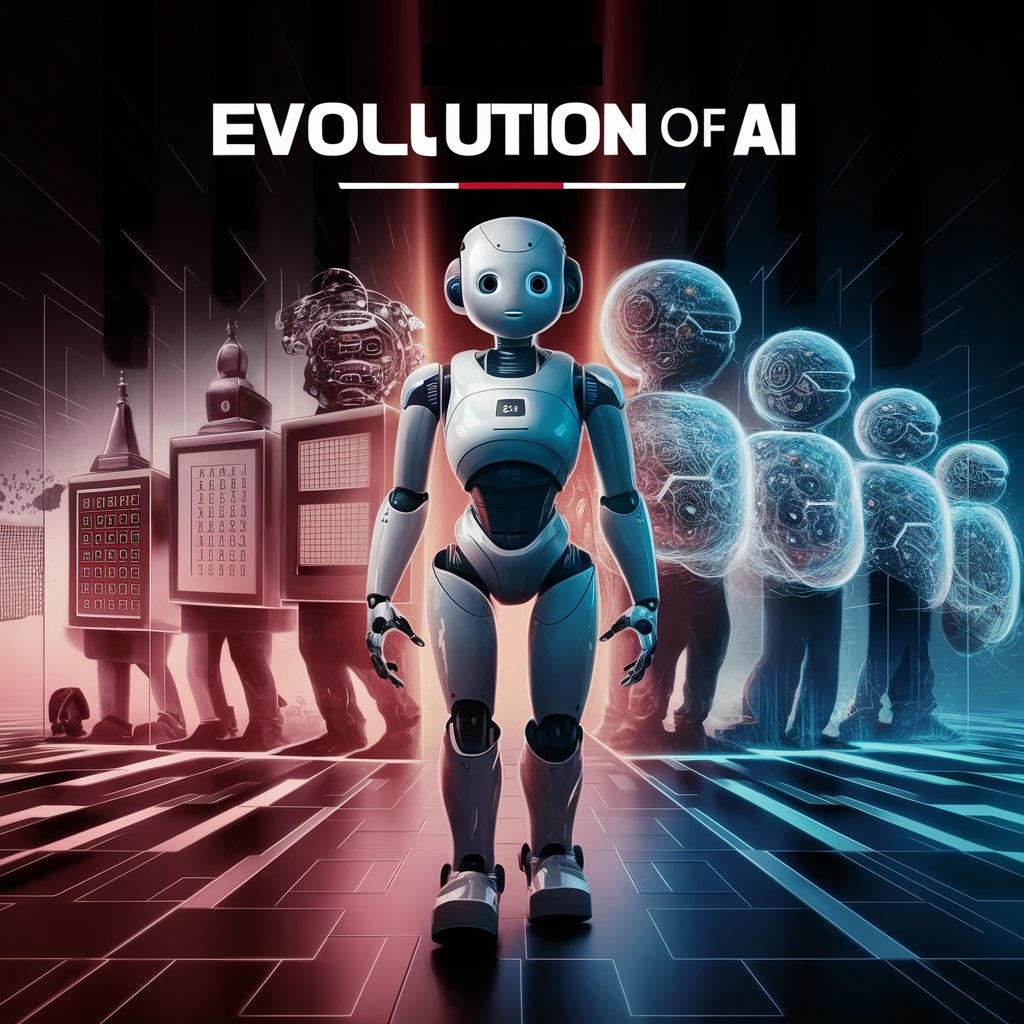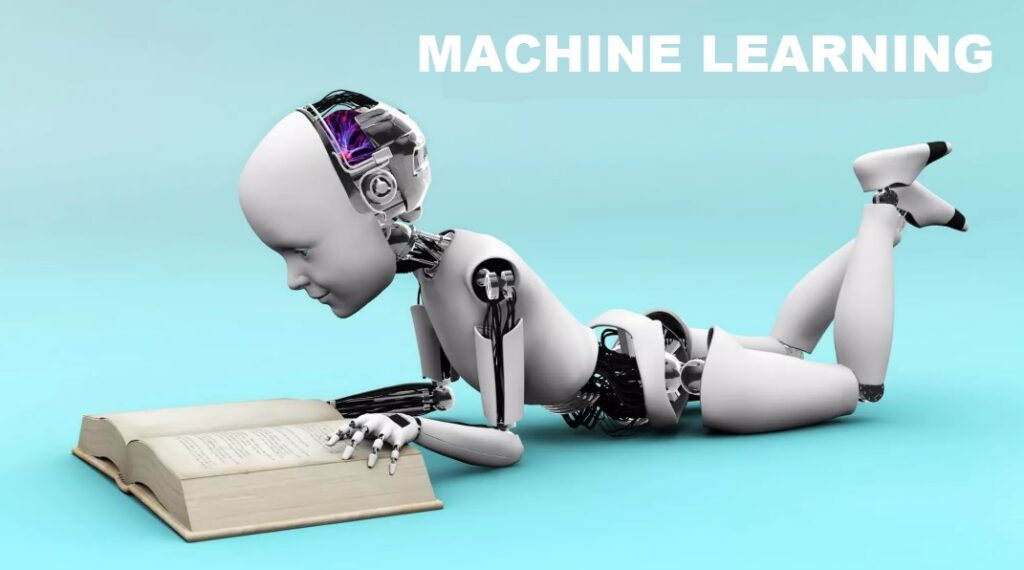What is Artificial Intelligence and How it is beneficial today
Table of Contents
Introduction
Artificial Intelligence (AI) has transitioned from a niche area of computer science to a transformative force reshaping industries and daily life. Its applications range from personal assistants like Siri and Alexa to complex systems in healthcare, finance, and autonomous vehicles. Understanding AI’s core concepts, its evolution, and its potential impact on society is crucial for anyone navigating the modern world.
This article aims to provide an in-depth exploration of AI, breaking down its fundamentals, advanced concepts, and the ongoing debate about its importance and potential risks. By the end, you’ll have a comprehensive understanding of what AI is, how it works, and why it matters.
What is Artificial Intelligence?
Definition:
- Artificial Intelligence (AI) refers to the simulation of human intelligence in machines that are programmed to think, learn, and make decisions autonomously.
Key Characteristics:
- Autonomy: AI systems can perform tasks without human intervention.
- Adaptability: AI can learn from data and experiences, improving performance over time.
- Rationality: AI aims to make decisions that maximize the chances of achieving specific goals.
Types of AI:
- Narrow AI (Weak AI): Designed for specific tasks (e.g., facial recognition, speech processing). It cannot perform tasks outside its designed function.
- General AI (Strong AI): Hypothetical AI that possesses the ability to perform any intellectual task that a human can. It can apply intelligence across various domains.
- Super intelligent AI: A level of AI that surpasses human intelligence in all aspects. This concept is largely theoretical and a subject of debate.
The Evolution of AI


Historical Milestones:
- 1950s: The Turing Test: Alan Turing proposed a test to evaluate a machine’s ability to exhibit human-like intelligence.
- 1956: Dartmouth Conference: The birth of AI as an academic discipline. Researchers discussed the possibility of creating machines that could mimic human reasoning.
- 1960s-1970s: Expert Systems: Early AI programs focused on solving specific problems using predefined rules (e.g., medical diagnosis systems).
- 1980s-1990s: Machine Learning: Shift from rule-based AI to learning-based models, enabling machines to improve their performance based on data.
- 2000s-Present: Deep Learning & Big Data: The advent of deep learning, powered by neural networks, and the availability of vast amounts of data have driven AI advancements.
AI Winter:
Periods in the 1970s and 1980s where progress in AI research slowed due to high expectations and limited computational power. This led to reduced funding and interest.
Resurgence:
Improved algorithms, increased computational power, and the explosion of data have reignited interest in AI, leading to significant breakthroughs in the 21st century.
Core Concepts of AI
1. Machine Learning (ML):

- Definition: A subset of AI that focuses on training algorithms to learn patterns from data and make decisions without explicit programming.
- Types of ML:
- Supervised Learning: Algorithms learn from labeled data (e.g., predicting house prices based on features like size, location).
- Unsupervised Learning: Algorithms find patterns in unlabeled data (e.g., customer segmentation).
- Reinforcement Learning: Algorithms learn by interacting with an environment and receiving feedback (rewards or penalties) based on actions (e.g., training a robot to walk).
2. Neural Networks:
- Definition: Computational models inspired by the human brain, consisting of layers of interconnected nodes (neurons) that process data.
- Deep Learning: A type of neural network with many layers, capable of learning complex patterns (e.g., image and speech recognition).
3. Natural Language Processing (NLP):
- Definition: A field of AI that focuses on the interaction between computers and human language. It enables machines to understand, interpret, and generate human language.
- Applications: Chatbots, sentiment analysis, language translation.
4. Computer Vision:
- Definition: A field of AI that enables machines to interpret and make decisions based on visual input (e.g., images, videos).
- Applications: Facial recognition, autonomous vehicles, medical imaging.
Why AI is Important Today
1. Enhancing Productivity:
- Automation: AI automates repetitive tasks, freeing up human resources for more complex, creative work.
- Data Processing: AI can analyze large datasets quickly, providing insights that were previously unattainable.
2. Transforming Industries:
- Healthcare: AI assists in diagnostics, personalized medicine, and drug discovery.
- Finance: AI powers fraud detection, algorithmic trading, and risk management.
- Manufacturing: AI-driven robots optimize production lines, improving efficiency and reducing costs.
- Transportation: Autonomous vehicles and smart traffic systems enhance safety and reduce congestion.
3. Improving Quality of Life:
- Personal Assistants: AI-powered assistants like Siri, Alexa, and Google Assistant help manage daily tasks.
- Smart Homes: AI enables intelligent home systems that control lighting, heating, and security.
- Entertainment: AI curates content recommendations on platforms like Netflix and Spotify, tailoring experiences to individual preferences.
4. Driving Innovation:
- New Technologies: AI fuels advancements in robotics, quantum computing, and biotechnology.
- Research & Development: AI accelerates scientific discoveries by analyzing vast amounts of research data.
The Risks and Challenges of AI
1. Ethical Concerns:
- Bias & Fairness: AI systems can inherit biases from training data, leading to unfair outcomes (e.g., biased hiring algorithms).
- Privacy: AI-driven data collection raises concerns about surveillance and data privacy.
- Autonomy: The increasing autonomy of AI systems raises questions about accountability and control.
2. Job Displacement:
- Automation: While AI enhances productivity, it also poses a risk to jobs that involve repetitive tasks.
- Reskilling: There is a growing need for reskilling the workforce to adapt to AI-driven changes in the job market.
3. Security Threats:
- Cybersecurity: AI can be exploited by malicious actors to launch sophisticated cyberattacks.
- Weaponization: The development of AI-powered weapons raises concerns about autonomous warfare and global security.
4. Dependence on AI:
- Over-reliance: Increased dependence on AI for decision-making can lead to a loss of human oversight and critical thinking.
- Complexity: As AI systems become more complex, understanding and managing them becomes more challenging.
The Future of AI
1. AI and Society:
- Human-AI Collaboration: The future may see closer collaboration between humans and AI, with machines augmenting human capabilities rather than replacing them.
- AI Governance: Developing frameworks for the ethical and responsible use of AI is critical to ensuring its benefits are realized while minimizing risks.
2. Advancements in AI:
- Explainable AI (XAI): Focus on making AI systems more transparent and understandable to humans.
- General AI: Research continues towards developing AI with generalized intelligence, though this remains a long-term goal.
3. AI in Everyday Life:
- Personalization: AI will increasingly tailor experiences in healthcare, education, and entertainment to individual needs and preferences.
- Smart Cities: AI will play a key role in developing smart cities with optimized energy use, efficient transportation, and enhanced public safety.
The Debate: Is AI Important or Not?
Arguments for AI:
- Efficiency & Innovation: AI significantly boosts efficiency and drives innovation across industries.
- Solving Complex Problems: AI is essential for tackling complex global challenges, from climate change to healthcare.
- Economic Growth: AI has the potential to drive significant economic growth by creating new industries and job opportunities.
Arguments Against AI:
- Ethical Dilemmas: The ethical challenges associated with AI, such as bias, privacy, and autonomy, are significant and must be addressed.
- Job Displacement: The potential for AI to displace jobs is a major concern, especially in industries reliant on manual labor.
- Security Risks: The potential misuse of AI, particularly in cyberattacks and autonomous weapons, poses a serious threat to global security.
Benefits of AI
Artificial Intelligence (AI) has become an integral part of our daily lives, offering numerous benefits that make our routines smoother, our work more efficient, and our futures more promising. This article explores the many ways AI is beneficial to humans, emphasizing its positive impact across various domains.
1. Enhancing Healthcare:
AI is revolutionizing the healthcare industry by enabling faster and more accurate diagnoses. It assists doctors in identifying diseases at earlier stages, often through AI-powered tools that analyze medical images or patient data. For instance, AI algorithms can detect cancerous cells in radiology images more quickly and precisely than traditional methods. This early detection can save lives by allowing for timely treatment. Additionally, AI-driven robots assist in surgeries, making procedures less invasive and reducing recovery times.
2. Improving Productivity:
In workplaces, AI tools are boosting productivity by automating repetitive tasks. This allows employees to focus on more complex and creative aspects of their jobs. For example, AI-powered software can handle tasks like data entry, scheduling, and even customer service through chatbots. By taking over these routine duties, AI frees up human workers to engage in tasks that require critical thinking and innovation. Consequently, companies can operate more efficiently, increasing overall productivity.
3. Enhancing Learning and Education:
AI is also making education more accessible and personalized. With AI, learning platforms can adapt to individual student needs, providing personalized learning experiences that cater to different learning styles and paces. AI-driven tools offer customized feedback, helping students to better understand their strengths and areas for improvement. Furthermore, AI can help educators by automating administrative tasks, such as grading, allowing them to spend more time engaging with students.
4. Advancing Research and Innovation:
AI accelerates research in various fields, from science to engineering. By processing vast amounts of data quickly, AI can identify patterns and trends that might take humans years to discover. In scientific research, AI helps in drug discovery by predicting how different compounds will interact with diseases, potentially leading to faster development of new treatments. In technology, AI contributes to advancements in robotics, self-driving cars, and renewable energy solutions, driving innovation and progress.
5. Enhancing Personal Convenience:
On a personal level, AI makes daily life more convenient. Virtual assistants like Siri, Alexa, and Google Assistant help with everyday tasks such as setting reminders, providing weather updates, and controlling smart home devices. AI also powers recommendation systems on platforms like Netflix and Amazon, suggesting content and products based on individual preferences, making it easier to find what we like. This convenience extends to various aspects of life, from managing finances with AI-powered apps to using navigation systems that offer the quickest routes.
6. Promoting Safety and Security:
AI plays a critical role in enhancing safety and security. In cybersecurity, AI algorithms can detect and respond to threats in real-time, protecting sensitive information from breaches. In public safety, AI-powered surveillance systems can monitor and analyze video feeds to detect unusual activities, helping prevent crimes. AI is also used in disaster management, where it can predict natural disasters and assist in coordinating effective responses.
In conclusion, AI is a powerful tool that offers significant benefits across multiple domains. From healthcare and education to productivity and personal convenience, AI enhances the quality of life and drives progress. As AI technology continues to evolve, its potential to benefit humanity will only grow, making it an indispensable part of our future.
Generative AI
Introduction to Generative AI
Generative AI refers to a subset of artificial intelligence that focuses on creating new content based on patterns and examples it has learned from existing data. Unlike traditional AI models that classify or analyze data, generative AI models produce novel outputs, such as text, images, or music. They are often trained on large datasets and use techniques like neural networks, specifically Generative Adversarial Networks (GANs) and Transformer models, to generate content that mimics human creativity and style.
Google is offering FREE certification in Generative AI. Click here to learn more.
Advanced Knowledge of Generative AI
Generative AI encompasses advanced techniques and models that push the boundaries of machine learning. Key components include:
- Generative Adversarial Networks (GANs): Consist of two neural networks, a generator and a discriminator, that compete against each other. The generator creates content, while the discriminator evaluates its authenticity. This adversarial process refines the generator’s ability to produce realistic outputs.
- Variational Autoencoders (VAEs): Use probabilistic models to encode input data into a latent space and then decode it back into data. VAEs are effective for generating diverse and high-quality samples.
- Transformer Models: Such as GPT-4, use self-attention mechanisms to understand and generate text. They excel in tasks like natural language processing, text generation, and translation.
- Diffusion Models: Generate high-quality images by progressively refining random noise through a diffusion process. These models have gained prominence for their ability to produce highly detailed and realistic visuals.
- Ethical Considerations: Advanced generative AI models raise significant ethical issues, including potential biases, misuse for disinformation, and intellectual property concerns. Addressing these challenges is crucial for the responsible deployment of generative AI technologies.
Generative AI continues to evolve, with ongoing research enhancing its capabilities and applications across various domains.
What are some ethical considerations when using generative AI
When using generative AI, several ethical considerations come into play:
- Bias and Fairness: Generative AI models can reflect and perpetuate biases found in their training data. It’s important to address and mitigate biases to avoid discriminatory or unfair outcomes.
- Privacy: AI systems can inadvertently generate or infer sensitive personal information. Ensuring data privacy and implementing strong safeguards is essential to protect individuals’ information.
- Misinformation: Generative AI can be used to create convincing but false information, such as deepfakes or misleading content. It’s crucial to establish mechanisms to detect and prevent the spread of misinformation.
- Transparency and Disclosure: Users should be aware when they are interacting with AI-generated content. Transparency about the use of AI and its role in content creation helps maintain trust and clarity.
- Accountability: Determining who is responsible for the outcomes of AI-generated content can be challenging. Clear accountability structures need to be established to address potential harm or misuse.
- Intellectual Property: Generative AI can produce content that resembles existing works, raising questions about copyright and ownership. Respecting intellectual property rights and ensuring fair use are important.
- Impact on Employment: The use of generative AI can affect job markets by automating tasks. It’s important to consider the socio-economic impacts and provide support for those affected.
- Environmental Impact: Training and deploying large AI models can be resource-intensive. Minimizing the environmental footprint of AI technologies is an important consideration.
- Security: Generative AI can be exploited for malicious purposes, such as creating fake identities or fraudulent documents. Implementing security measures to prevent such misuse is crucial.
- Ethical Use: Ensuring that AI technologies are used for purposes that align with ethical standards and societal values is fundamental to their responsible deployment.
Addressing these considerations helps in fostering responsible and ethical use of generative AI.
Conclusion
AI is undoubtedly a powerful tool with the potential to transform society in profound ways. Its ability to enhance productivity, drive innovation, and improve quality of life makes it a crucial technology in today’s world. However, the risks and challenges associated with AI cannot be ignored. Ethical considerations, job displacement, and security concerns are all critical issues that must be addressed to ensure AI’s benefits are realized without compromising human values.
As AI continues to evolve, it is essential for society to engage in thoughtful discussions about its role in our lives. Balancing the benefits and risks of AI will be key to harnessing its full potential while safeguarding our future.
Key Takeaways
- AI is a transformative technology with applications across various industries, from healthcare to finance.
- The evolution of AI has been driven by advances in machine learning, neural networks, and big data.
- AI offers significant benefits, including enhanced productivity, innovation, and improved quality of life.
- Ethical concerns, job displacement, and security risks are major challenges that must be addressed.
- The future of AI will depend on responsible governance, human-AI collaboration, and continued advancements in the field.
Final Thoughts:
Understanding AI, its capabilities, and its implications is not just for technologists or business leaders; it’s for everyone. As AI becomes increasingly integrated into our daily lives, staying informed about its developments will be crucial for navigating the future.

